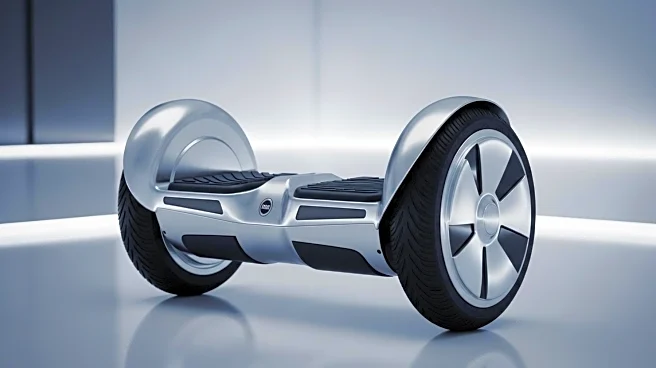What is the story about?
What's Happening?
The self-balancing scooter market is expected to grow significantly, with projections indicating an increase from USD 2.5 billion in 2025 to USD 12.2 billion by 2035. This growth is driven by innovations in technology and a global shift towards sustainable urban mobility solutions. Self-balancing scooters, including hoverboards and Segways, are becoming integral to urban transportation, offering compact, energy-efficient alternatives to traditional vehicles. Manufacturers are focusing on integrating smart sensors and AI to enhance user experience and safety.
Why It's Important?
The expansion of the self-balancing scooter market highlights a broader trend towards eco-friendly transportation solutions. As cities aim to reduce carbon emissions and improve urban mobility, these scooters offer a viable option for short-distance travel. The market growth presents opportunities for manufacturers to innovate and diversify their product offerings, potentially leading to increased competitiveness and profitability. This shift also aligns with global sustainability goals, promoting greener urban environments.
What's Next?
Manufacturers are expected to continue innovating, focusing on safety and technological advancements to meet consumer demands. Partnerships with municipal bodies could facilitate the integration of self-balancing scooters into public transportation networks, enhancing last-mile connectivity. As smart cities evolve, these scooters may become part of shared mobility services, offering seamless transportation solutions. The industry will likely face challenges related to safety regulations and battery reliability, necessitating strategic innovation.
AI Generated Content
Do you find this article useful?
















